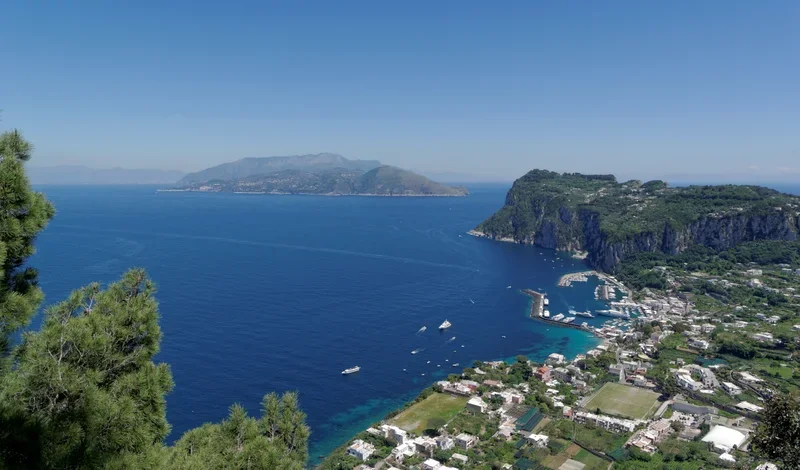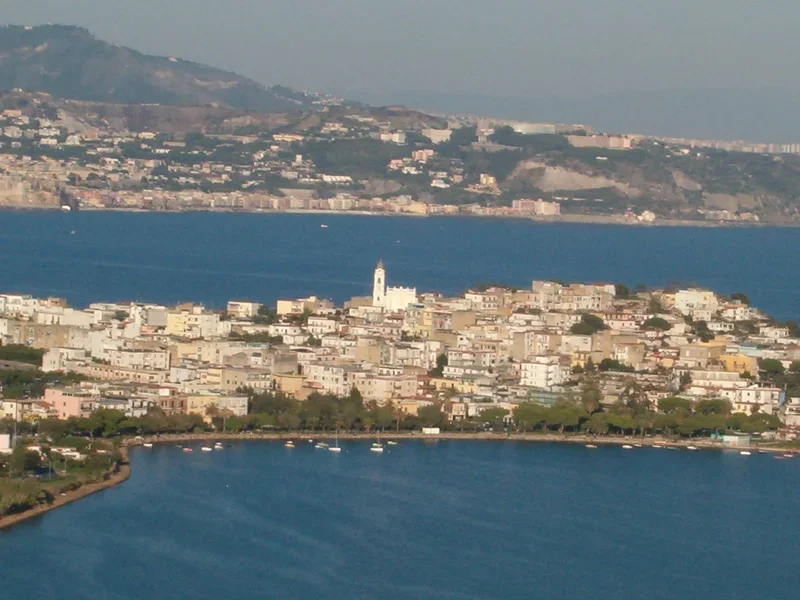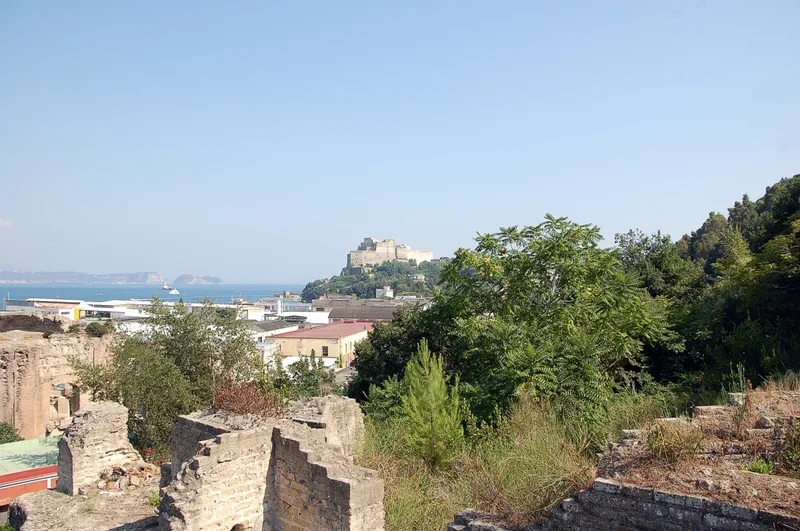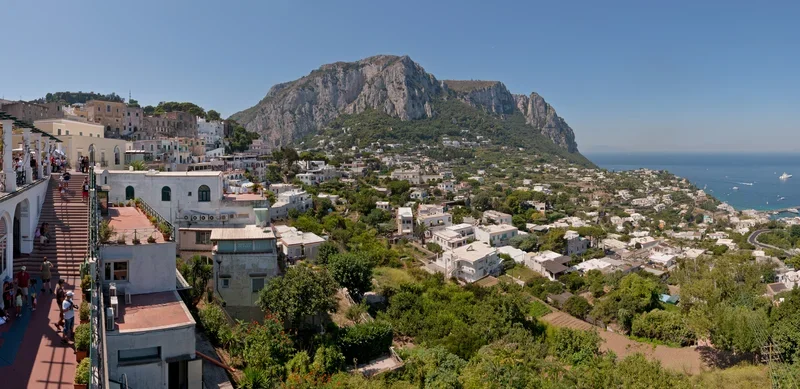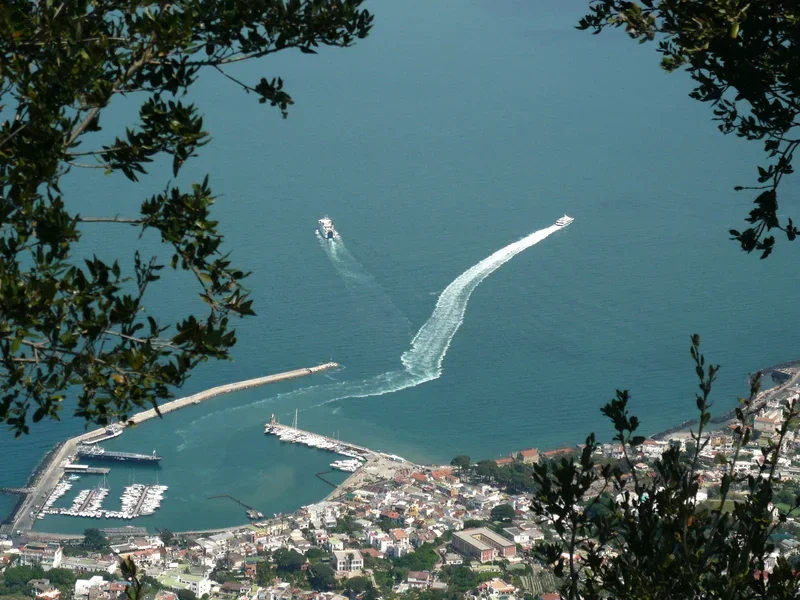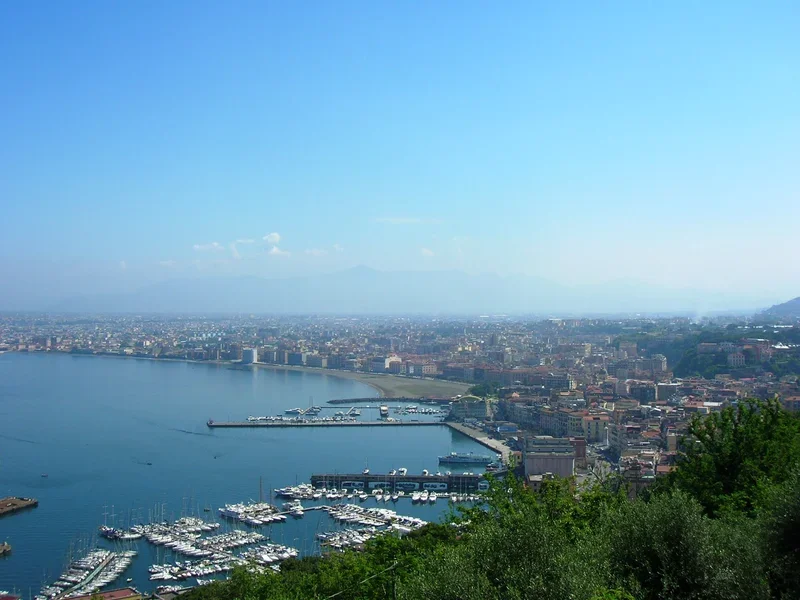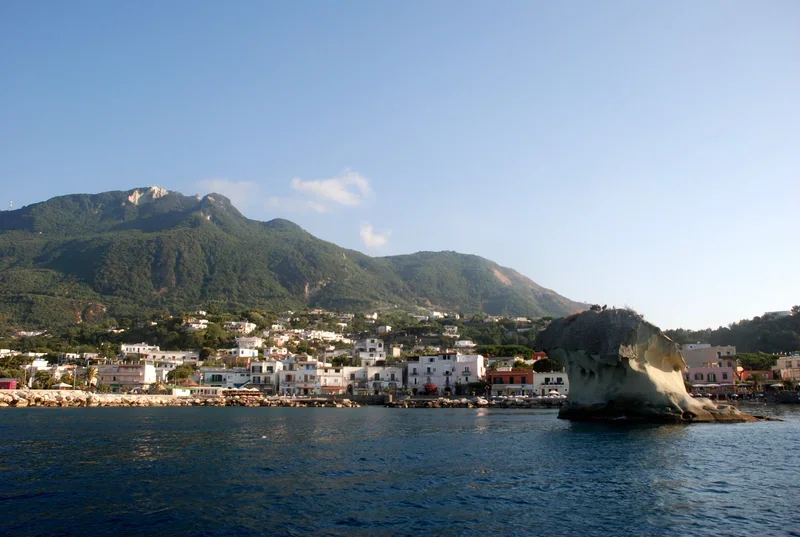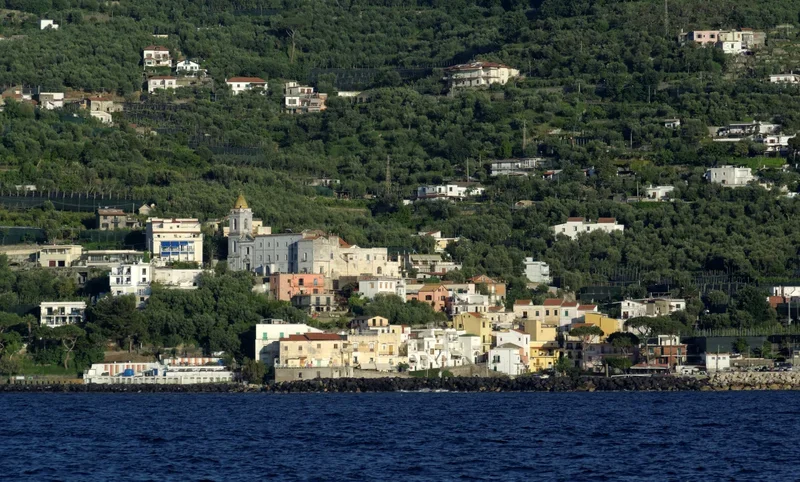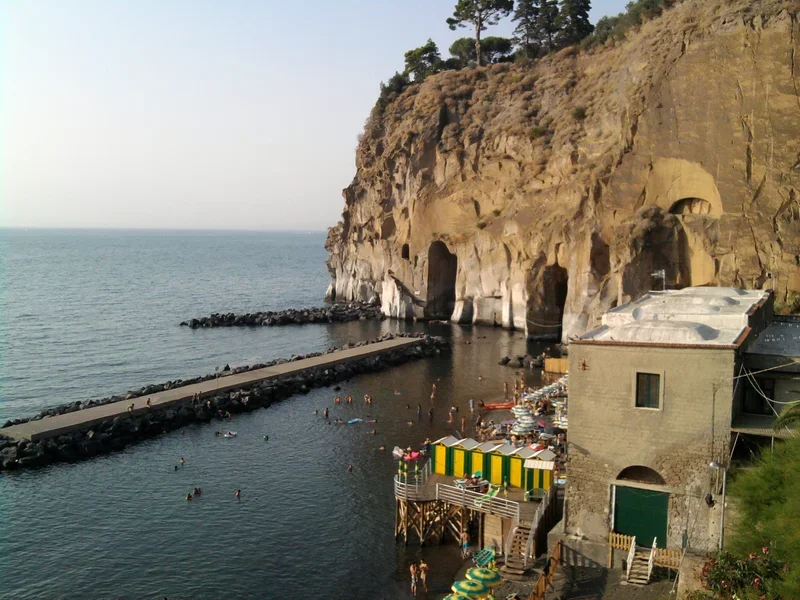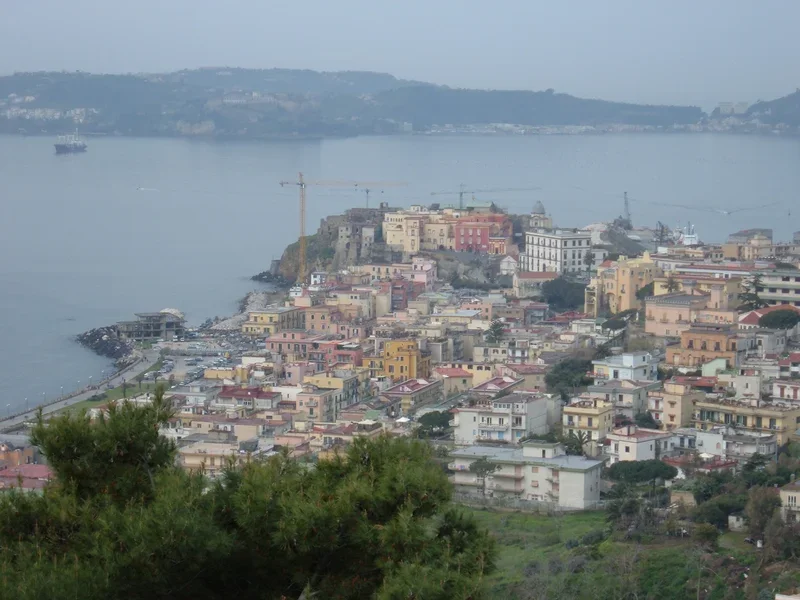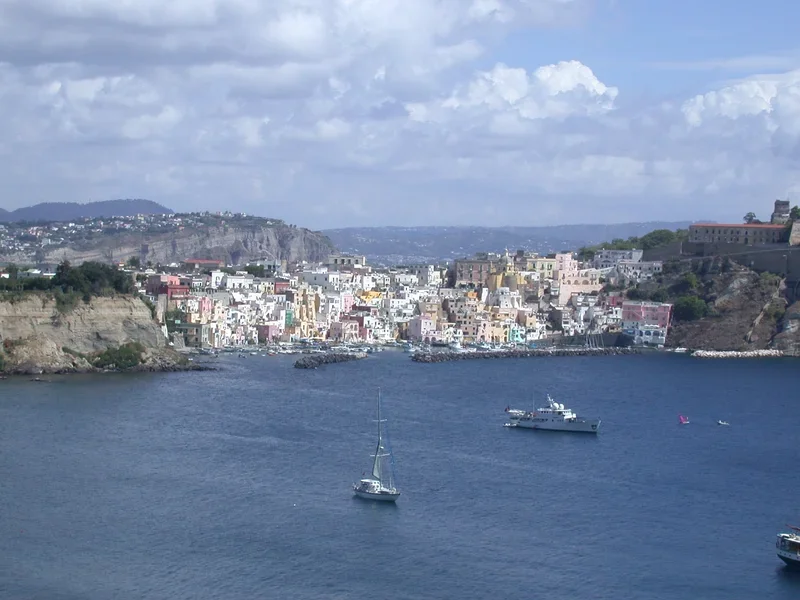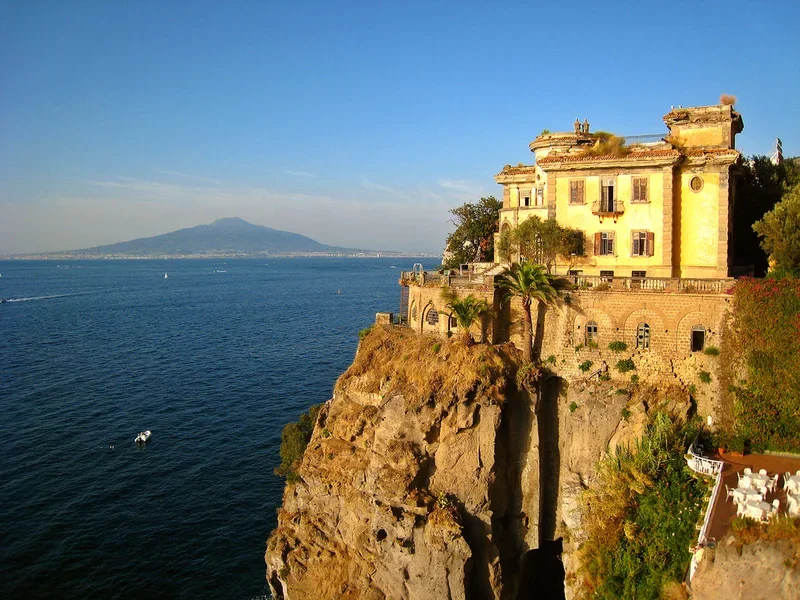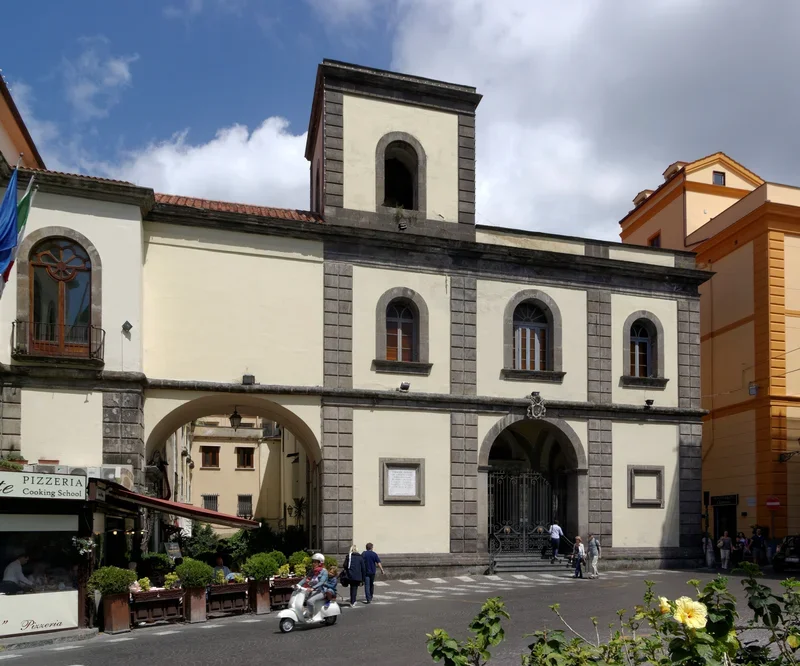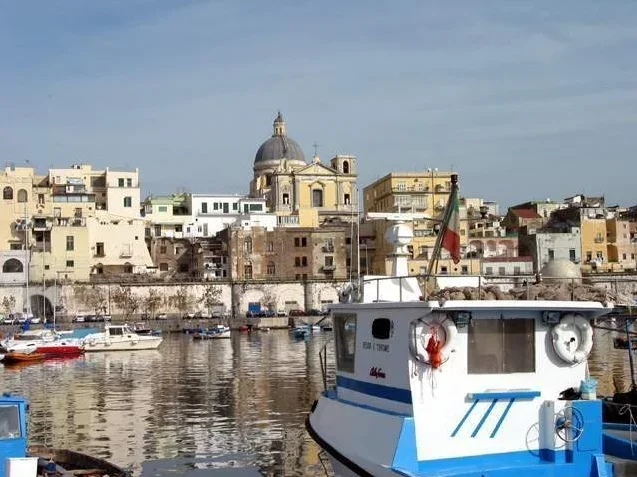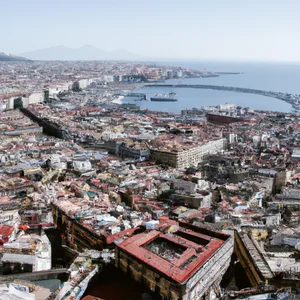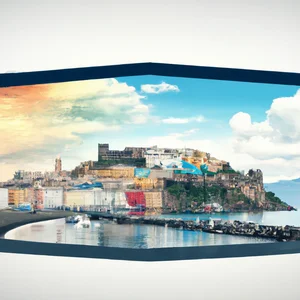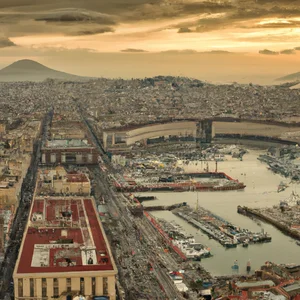Book your experience
History and transformations of the Port of Naples: from its birth to the present day
The Port of Naples, one of the most historic and significant in Europe, is a place that tells not only the story of a city, but also that of an entire people. Since its birth, the port has represented a crossroads of cultures, trade and exchanges, a focal point for the maritime routes that have connected the Mediterranean and beyond. Its origins date back to ancient times, when Naples, founded by the Greeks, began to develop as an important commercial center. Since that moment, the port has undergone epochal transformations, reflecting the historical and social vicissitudes of the city and the nation.
Over the centuries, the port experienced moments of great splendor during the Roman Empire and faced crisis and decline in the Middle Ages. However, it was during the Bourbon era that the port experienced significant modernization, becoming an engine of economic and commercial development. The nineteenth century marked the beginning of industrialization, further transforming its function and broadening its impact on international trade.
The two world wars represented a period of great difficulty, but the port was able to get back on its feet, thanks to an impressive reconstruction work after the war. In the 70s and 80s, the economic crisis and the need for reorganization led to new challenges, while modern transformations, characterized by infrastructural and technological innovations, redesigned the face of the port.
Today, the Port of Naples is not only a vital commercial hub, but also a symbol of resilience and innovation, with future prospects that promise to further consolidate its economic role. In this article we will explore the ten key moments that have marked the history and transformations of the Port of Naples, a journey through the centuries that highlights the importance of this emblematic place.
Ancient origins and foundation
Ancient origins
The port of Naples has a thousand-year history that dates back to antiquity. The first traces of port settlements date back to the Greco-Roman period, when Naples was known as Neapolis. The ancient Romans expanded and strengthened the port to encourage commercial exchange and facilitate maritime connections with the provinces of the Empire.
Foundation
The foundation of the port of Naples is generally attributed to the Greek era, when Greek colonists founded the city of Parthenope around the 7th century BC. Subsequently, the city was rebuilt and expanded by the Romans, becoming one of the main ports of the Mediterranean.
The port of Naples has played a fundamental role in the history of the city, contributing to its economic and cultural growth over the centuries. Even today, the port represents an important commercial and tourist hub, welcoming thousands of visitors every year.
The port during the Roman Empire
Ancient origins and foundation
The port of Naples has a long history that has its roots in antiquity. Its foundation dates back to the Greco-Roman period, when the city was known as Neapolis. The strategic position of the port, protected by the mountains and open to the sea, made it an important commercial and military center since ancient times.
During the Roman Empire, the port of Naples became one of the most important in the Mediterranean. Thanks to its geographical position, it was a crucial hub for trade between Italy and the provinces of the Empire. Ships from all over the world with precious goods docked in the port of Naples, contributing to the prosperity of the city.
The waters of the port were also used for military purposes, with the presence of a naval fleet that protected trade and guaranteed the safety of sea routes. The port of Naples was therefore a crossroads of cultures and goods, a symbol of the power and wealth of the Roman Empire.
Middle Ages and Renaissance: expansion and decline
Middle Ages
In the medieval period, the port of Naples experienced a period of significant expansion. The city became an important commercial center in the Mediterranean, thanks to its strategic position and the presence of a thriving maritime activity. Goods from all over the world flowed into the port of Naples, contributing to the city's economic growth and its international prestige.
Merchant ships loaded with spices, fabrics, precious metals, and other luxury goods regularly docked at the port, resulting in intense trade with other cities in the Mediterranean and Europe. The port therefore became a meeting point and cultural exchange between different civilisations, contributing to the richness and diversity of the city of Naples.
Renaissance
In the Renaissance, the port of Naples continued to play a fundamental role in the city's economy. However, with the advent of new trade routes and competition from other European ports, such as Genoa and Venice, Naples began to lose its centrality in the international maritime panorama.
The wars and political crises that characterized the Renaissance period further contributed to the decline of the port of Naples, which saw the number of ships and goods transiting through it gradually decrease. Despite this, the port continued to be an important center of commercial and cultural exchange, keeping its maritime and port tradition alive.
The Bourbon era: modernization and development
The Bourbon era
During the 18th century, Naples became part of the Kingdom of the Two Sicilies, governed by the Bourbon dynasty. During this period, the port of Naples underwent important transformations which led to significant modernization and development.
Modernization of the port
The Bourbon dynasty invested considerable resources in the modernization of the port of Naples, improving the port infrastructure and strengthening commercial activities. New piers, warehouses and docks were built, making the port more efficient and functional.
Economic development
The port of Naples became one of the main commercial hubs in the Mediterranean, facilitating the exchange of goods and the growth of the local economy. Trade routes extended to the East and Africa, contributing to the prosperity of the city and the surrounding region.
Urban transformations
The Bourbon era also saw important urban transformations in the port area of Naples. New public and residential buildings were built, which contributed to giving a more modern and orderly face to the city.
Technological innovations
During the Bourbon period, new technologies were introduced in the maritime sector, such as the use of steam engines for navigation. These innovations further improved the efficiency of the port and the commercial activities associated with it.
In conclusion, the Bourbon era represented a period of great turmoil and development for the port of Naples, which became an important commercial center in the Mediterranean. The transformations and innovations introduced during this period contributed significantly to the history and evolution of the port of Naples.
The port in the nineteenth century: industrialization and trade
Industrialization
In the nineteenth century, the port of Naples underwent profound transformations due to the industrialization taking place in Europe. New technologies and machinery were introduced, improving the efficiency of port operations and allowing for an increase in commercial traffic. The port infrastructure was strengthened and expanded to meet the growing demand for freight transport. New warehouses, cranes and storage infrastructure were built to handle the flow of goods from all over the world.
Commerce
The nineteenth century was a period of intense commercial development for the port of Naples. The city became an important commercial center in the Mediterranean, thanks to its strategic position and its modern port infrastructure. Goods from all over the world arrived in Naples for distribution in Europe and beyond. Products such as silk, ceramics, wine and oil were exported around the world, contributing to the economic growth of the city and the surrounding region.
The port of Naples became an important hub for international trade, with ships from countries such as China, India and England stopping in to unload and load goods. The presence of a well-developed railway network connected the port to the main Italian cities, facilitating the transport of goods within the country.
This period of commercial prosperity also led to an increase in the population and urban expansion of Naples. New residential and industrial neighborhoods were built to accommodate the new residents and support the growing economy. The port of Naples became the driving force of the local economy, generating wealth and opportunities for the population.
The port during the two world wars
First World War
During the First World War, the port of Naples played a fundamental role for the Italian army. Thanks to its strategic position, the port was used for the transport of troops, armaments and supplies to the front. Furthermore, it was important for the supply of food and essential materials for the civilian population.The situation in the port during the war was very intense and chaotic, with a continuous flow of military and merchant ships arriving and departing. Despite the damage suffered during enemy bombings, the port of Naples continued to operate its vital role for the country’s economy and defense.
World War II
During the Second World War, the port of Naples was once again at the center of war events. During the German occupation, the port was used for the transport of troops and war materials. However, the city of Naples suffered heavy Allied bombing which caused serious damage to the port and surrounding infrastructure.Despite the serious damage suffered, the port of Naples continued to play a crucial role in the supply of the Italian and German troops present in the city. After the liberation of Naples in 1943, the port was used for the transport of Allied troops and supplies to the Italian front.
In conclusion, during the two world wars the port of Naples played a key role for the Italian and allied armies, guaranteeing the supply of troops, armaments and essential materials. Despite the damage suffered during the bombings, the port managed to recover and continue to play its important role in the country’s economy and defense.
Post-war reconstruction and recovery
The reconstruction of the port of Naples after the Second World War
After the devastation caused by bombings during the Second World War, the port of Naples had to face a phase of reconstruction and recovery. Numerous infrastructures had been seriously damaged and had to be rebuilt to allow the normal functioning of the port and promote the economic development of the city.
Local and national authorities have worked together to plan the reconstruction of the port, seeking to modernize existing facilities and implement new technologies to improve the efficiency of port operations. New docks have been built, storage areas have been upgraded and new cranes have been installed to facilitate the loading and unloading of goods.
The reconstruction of the port of Naples was a long and complex process, but it ultimately led to a significant recovery in port activity and helped revive the city's economy. Thanks to investments in the modernization of port infrastructure, Naples has become an important hub for maritime transport in the Mediterranean, attractive for shipping companies and international trade.
The post-war reconstruction represented a crucial moment in the history of the port of Naples, marking the beginning of a new era of development and economic growth that allowed the city to establish itself as one of the main ports in the Mediterranean. The modernization of infrastructure and the implementation of new technologies have contributed to making the port of Naples competitive on an international level and guaranteeing its key role in the global maritime panorama.
Modern transformations: infrastructure and technology
The evolution of the Port of Naples in recent decades has seen important transformations in terms of infrastructure and technology.
With the advent of the digital age and e-commerce, the Port of Naples has had to adapt to new market needs and the challenges of globalization. This has led to important investments in the modernization of port infrastructure, with the construction of new container terminals, the expansion of the piers and the implementation of cutting-edge technologies to manage goods and passenger traffic more efficiently.
Port infrastructures have been upgraded to accommodate increasingly larger ships and to increase the loading and unloading capacity of goods. Furthermore, new road and rail connections have been created to facilitate the transport of goods towards the hinterland and the rest of Europe.
Technology has played a fundamental role in the transformation of the Port of Naples, with the implementation of digital goods traceability and control systems, the creation of online platforms for booking and managing port operations, and the use of drones and robots to optimize loading and unloading operations.
These transformations have contributed to making the Port of Naples more competitive on an international level, attracting new investments and promoting the economic development of the city and the surrounding region. Thanks to modern infrastructure and technologies, the Port of Naples has established itself as one of the main maritime hubs in the Mediterranean, with promising growth and development prospects for the future.
Modern transformations: infrastructure and technology
Infrastructure
The port of Naples has undergone important transformations over the decades to adapt to the needs of modern maritime traffic. New piers, quays and passenger terminals have been built to accommodate increasingly larger ships and ensure efficient movement of goods and passengers. Furthermore, the infrastructures connecting with the port and the railway network have been strengthened to facilitate the exchange of goods and the mobility of people.
Technology
The port of Naples has seen considerable technological development in recent years. Modern digital platforms have been implemented for the management of maritime traffic, the booking of port services and the traceability of goods. Furthermore, automated systems for loading and unloading ships have been introduced, reducing waiting times and increasing the efficiency of port operations.
Furthermore, new technologies have been adopted to ensure the safety and environmental sustainability of the port. Monitoring systems have been installed to prevent pollution and maritime accidents, and eco-sustainable solutions have been introduced to reduce the environmental impact of port activities.
The modern transformations of the port of Naples have contributed to enhancing its competitiveness at an international level and making it an important logistical hub in the Mediterranean. Thanks to cutting-edge infrastructure and technology, the port is able to manage an ever-increasing volume of maritime traffic and offer efficient and quality services to its users.

